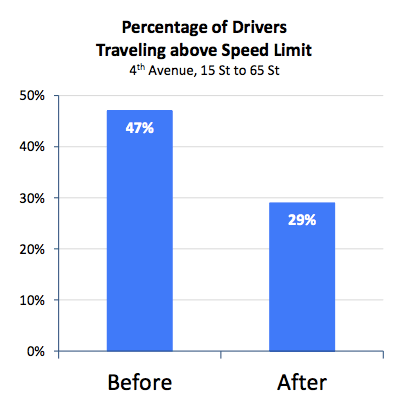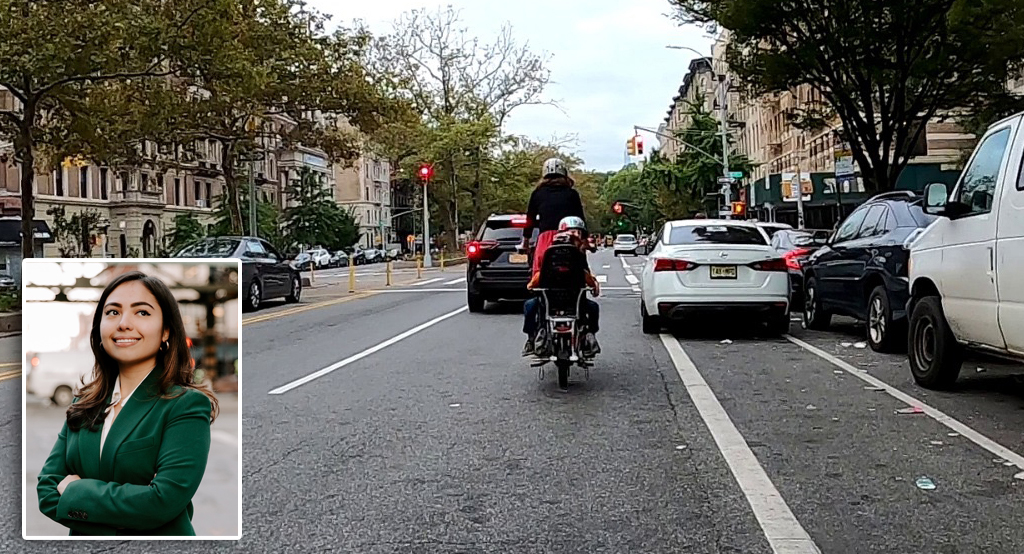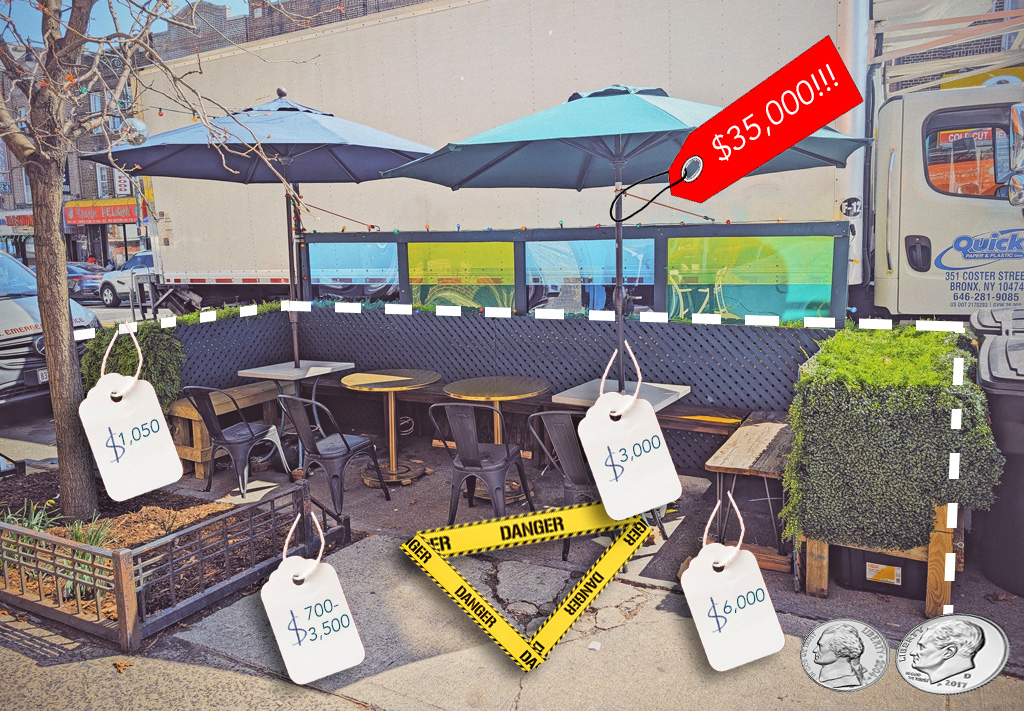
A year and a half after implementing a road diet on 50 blocks of Fourth Avenue in Sunset Park, DOT returned to the Brooklyn Community Board 7 transportation committee last night with a report on how the redesign has affected safety. The results are positive: More people are walking on Fourth Avenue, while speeding, crashes, and pedestrian injuries are all down significantly [PDF].

DOT implemented the road diet between August and December of 2012, converting Fourth Avenue from three lanes in each direction to two, adding turn restrictions, widening pedestrian medians, and expanding the width of the parking lanes. For its study, DOT looked at crash, speed, and traffic data for the 12 months before and after the road diet was implemented.
Over that period, total crashes have dropped 13 percent, crashes with injuries have decreased 8 percent, and pedestrian injuries have decreased 29 percent. Before the road diet, 47 percent of drivers were speeding. After the road diet, the proportion of drivers speeding shrank to 29 percent.
In the six years before the road diet, there were seven fatalities along this section of Fourth Avenue. There was one death while the road diet was being implemented in late 2012, and none in the 17 months since.
Pedestrian activity has ticked up slightly at intersections along Fourth Avenue, and motorist travel times have remained mostly steady. Northbound trips during the morning rush hour now average 15 seconds shorter than before, while southbound evening rush hour trips take an average of 88 seconds longer over the 2.5-mile route.
DOT is already planning to build out the design using concrete, with a capital project from 33rd Streets to 47th Street partially funded. DOT is looking for additional funds, and CB 7 transportation committee chair Ryan Lynch suggested the board ask Council Member Carlos Menchaca to use discretionary funds to support the project. Eventually, DOT hopes to reconstruct all of Fourth Avenue between 65th Street in Bay Ridge and Atlantic Avenue in Park Slope.
DOT noted in its presentation that the final design for Fourth Avenue has yet to be determined, but it's likely that it will mirror the paint-and-planters design that's resulted in the significant safety gains described last night.
So far, bike safety has largely been overlooked on Fourth Avenue. Although the extra-wide parking lane provides informal space for cycling, it's frequently blocked by double-parking and still feels dangerous. Divided two-way streets like Fourth Avenue provide an opportunity for center-running protected bike lanes, like the one on Allen Street in Manhattan, that could offer much bigger safety gains.
But instead of Fourth Avenue, discussion of bike facilities in Sunset Park has concentrated on the much-narrower Fifth Avenue, which has received shared-lane markings, and the Brooklyn Waterfront Greenway, which is far from the residential heart of the neighborhood and remains years from completion.
"All options should be on the table. We should look at different ways to enhance the corridor for all users of the roadway," Lynch told Streetsblog. "We're very pleased that DOT is looking to invest capital resources in a dangerous corridor."
Lynch added that DOT should make fixes to other dangerous streets in the area, as well. The board is asking DOT to focus especially on Seventh and Eighth Avenues. CB 7 Vision Zero workshops earlier this year were well-attended, Lynch said. "Fourth Avenue is obviously a very big issue in our community, but it's not the sole issue when it comes to street safety," Lynch said. "The common refrain was, 'We need to do more.'"





